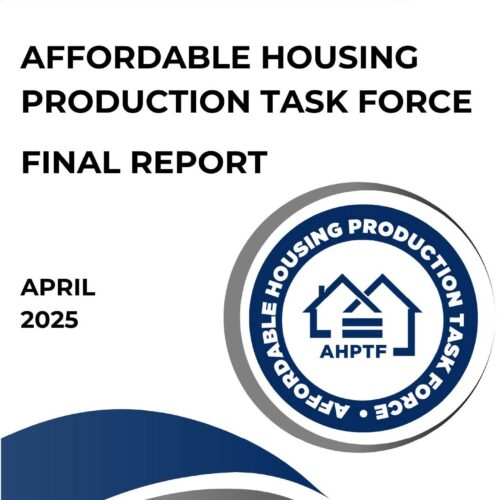Workforce Development: 5 Things to Know
1. Employment and Training Administration (ETA) Publishes Guidance on Registered Apprenticeship Provisions and Opportunities in the Workforce Innovation and Opportunity Act (WIOA) for States
Registered Apprenticeship is an important workforce development strategy that the workforce system provides to its customers, both job seekers and employers. It is an evidence-based model for job seekers and is a job-driven strategy for employers and industries. Engagement with employers, institutions of higher education, and policy makers has ramped up significantly in order to achieve the administration’s goal to double the number of apprentices across the United States. This is an historic opportunity for the workforce system to expand its business base and offer job seekers greater employment prospects while offering employers a strategic approach to talent development.
The Employment and Training Administration has published Training and Employment Guidance Letter 13-16 (TEGL). The purpose of this TEGL is to provide information about the new provisions for Registered Apprenticeship in WIOA, including the status of Registered Apprenticeship sponsors as Eligible Training Providers, membership on State and Local Workforce Boards, the use of WIOA funding to support Registered Apprenticeship, reporting on Registered Apprenticeship activity, and suggestions about how to coordinate with the Registered Apprenticeship system.
Attachment III – How to Count Registered Apprenticeship in the Workforce System
2. ETA Releases Planning Estimate for WIOA Youth, Adult, and Dislocated worker Program Allotments for Program Year 2017
The ETA has transmitted to states and outlying areas estimated funding levels for Workforce Innovation and Opportunity Title I, Adult, and Dislocated Worker Program Allotments for program year 2017.
Training and Employment Guidance Letter 14-16 (TEGL) conveys the funding levels. The TEGL provides additional background, funding levels for the allotment estimates, and the formula data.
3. US Department of Labor Awards $65 Million to Help Unemployed Workers with Job Searches, Support Integrity of the Unemployment Insurance Program
The US Department of Labor’s Employment and Training Administration awarded $65 million to 52 state workforce agencies, including Puerto Rico, the Virgin Islands and the District of Columbia, to operate Reemployment Services and Eligibility Assessment (RESEA) programs for unemployment insurance beneficiaries on January 13th.
The funding will allow states to continue operating their RESEA programs through April 2017. Upon receipt of a full year’s appropriation for 2017, ETA expects to provide additional funding to administer these programs through December 2017.
The funds will be used to conduct in-person assessments in American Job Centers. The assessments include:
- Developing an individual re-employment plan for each claimant selected for services.
- Providing career and labor market information to inform their job search.
- Help developed job skills and employment prospects.
- Customizing reemployment services.
- Review the claimant’s continued eligibility for UI benefits.
- List of Funds Awarded to ERC members:
- Connecticut $838,222
- Delaware $265,318
- Maine $720,716
- Maryland $689,745
- Massachusetts $3,387,820
- New Hampshire $754,155
- New Jersey $1,063,379
- New York $11,215,399
- Pennsylvania $830,840
- Puerto Rico $165,018
- Vermont $403,240
- Rhode Island $641,101
- Virgin Island $120,949
4. State Science & Technology Institute (SSTI) Examines Governors’ State of the State and Inaugural Addresses for References to TBED, Education, and Workforce Development
Since its inception in 1996, the State Science & Technology Institute (SSTI) has developed a nationwide network of practitioners and policymakers dedicated to improving the economy through science, technology, innovation and entrepreneurship. SSTI conducts research on common performance standards, identifies best practices, analyzes trends in and policies affecting tech-based economic development, and fosters greater cooperation among and between all public, private and nonprofit organizations encouraging prosperity.
Early in each calendar year, SSTI presents excerpts from the State of the State and inaugural addresses by the nation’s Governors. The first round of synopses addressing technology-based economic development (TBED), education and workforce development references was released today (January 12). Next week the SSTI Digest will continue with Part II of “Tech Talkin’ Govs” featuring news from the next round of addresses.
Click here for the summaries.
5. JPMorgan Chase and CCSSO Announce $20 Million to Improve Career Education for Young People in 10 States
The Council of Chief State School Officers (CCSSO) and JPMorgan Chase & Co. announced $20 million in grants to 10 U.S. states to dramatically increase the number of students who graduate from high school prepared for careers. Developed as part of JPMorgan Chase’s $75 million global New Skills for Youth initiative, each winning state will work with government, business and education leaders to strengthen career education and create pathways to economic success.
These 10 states demonstrated the strongest plans to work across sectors to transform how they design and develop career preparedness education programs and provide young people with the skills they need to compete for high-skill, well-paying jobs. They have also committed to bring together education leaders, business partners and community partners to set ambitious benchmarks for achieving these goals.
Too many students leave high school without being prepared for college or a career. Nationwide, the unemployment rate for young people ages 16-24 is 9.3 percent, with many more working only part-time or in low-wage jobs with little opportunity to advance. At the same time, the U.S. economy is projected to produce millions of well-paying jobs over the next decade, about two-thirds of which will require some post-secondary education but not necessarily a four-year college degree.
For all states, this is an opportunity to work across sectors and pull together stakeholders in business, industry, higher education and within communities to research what has worked and what career pathways are most needed for kids in their state.
These state grants are one part of the $75 million, five-year New Skills for Youth initiative developed by JPMorgan Chase, in collaboration with CCSSO, Advance CTE and Education Strategy Group, aimed at strengthening career-focused education starting in high school and ending with postsecondary degrees or credentials aligned with high-skill jobs. In recent years, more than 40 states have committed to transforming career education for all students. In March 2016, JPMorgan Chase and CCSSO awarded $100,000 grants to 24 states and the District of Columbia for planning and early implementation of long-term career readiness education programs that align with the needs of area employers. These states received targeted coaching and support to begin implementing these programs over the past year.





